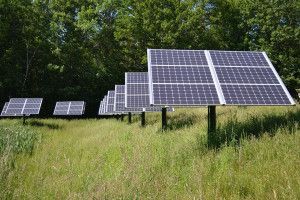5 Best Examples For Growing A Greener Business
The thing about running a business is that you want it to consistently make money and end up being profitable all the time. Sadly, some entrepreneurs follow business growth principles that are perhaps at the other end of the ethical trading spectrum.
You’re likely reading this article today because you run a business, but you want to make it greener and more ethical. But, you’re perhaps unsure which methods you should follow to make your company greener. With that in mind, take a look at these examples for inspiration:

Be more transparent
Let’s face it: one of the pet hates that most consumers have is a company’s lack of transparency. We live in an age where accountability matters and people want to know more about how their products get made and where the raw materials get sourced.
One way to make your business greener is by being more transparent. Be honest with your customers – and yourself. If your manufacturing practices aren’t particularly ethical, make a stand, and change things.
Invest in solar technology for your premises
It’s a well-known fact that photovoltaic solar panels can harness energy from the sun, enabling you to convert it into electricity or hot water. You could invest in solar technology to partly or wholly power your premises and make it more self-sustainable.
The use of solar technology for your business is a big plus point when striving for a greener and more sustainable image. Plus, your company could even receive government incentives for switching to solar power!

Strive for the paperless office
There’s no reason why, in the 21st century, you cannot achieve a paperless office. Contracts, for instance, can get signed and stored digitally
, negating the need to keep vast volumes of paperwork for archive purposes.
And for the times where you must print documents on paper, aside from using recycled paper you could pledge to plant a tree for every ream of paper used. Such an approach is both ethical and an excellent marketing idea for companies looking to become greener.
Embrace the use of recycled products
A way to show that your company is heavily invested in sustainability is by embracing recycled products. For instance, tote bags with your logo are good
for brand awareness. But they’re even better when they’re made with recycled materials!
You could also encourage recycling at each of your premises and use recycled paper if you must print documents out. If you run a cafe, for example, you could incentivize customers that bring in their coffee cups from home to use instead of asking for disposable ones.
Give back to the community
One final way of making your business more greener is by devoting some of your resources to giving back to your community. There are many examples of how you could do that. For instance, you could donate unused fabrics or metals to re-use organizations.
Another idea is to donate your products or services for charitable reasons, such as during times of crisis.


